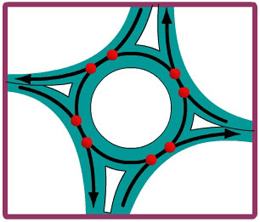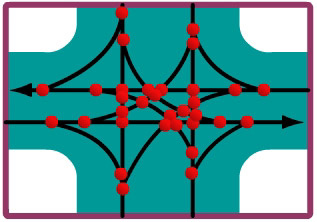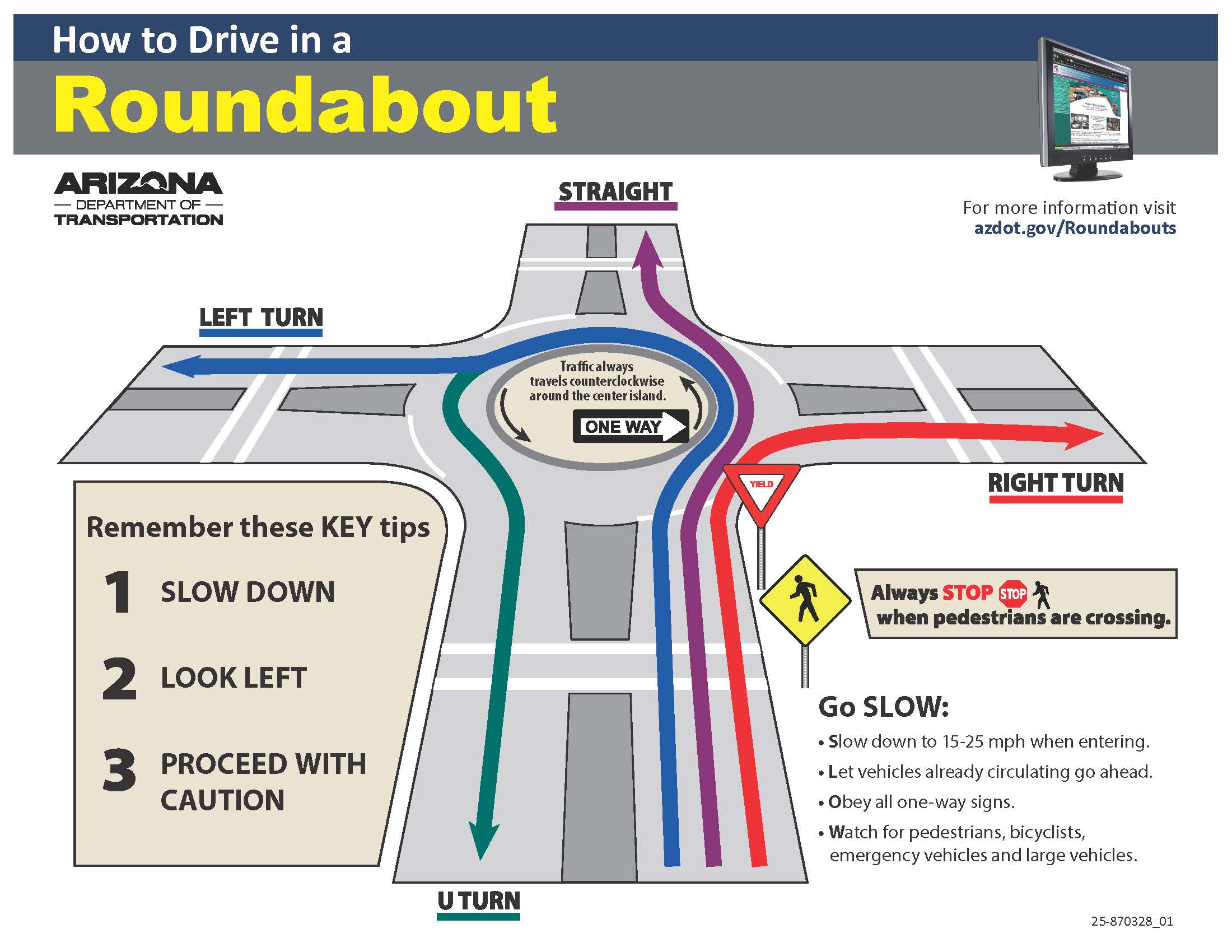Roundabouts
Roundabouts
The modern roundabout is a type of raised intersection with no traffic lights. It is designed to reduce crashes and improve traffic flow. By understanding what a modern roundabout is and how it works, motorists, bicyclists and pedestrians can travel through intersections easier and more safely.
How to Drive Around Modern Roundabouts
As you enter a roundabout, remember two key points:
- Never merge. The right of way is observed at the yield sign. Motorists already in the roundabout have the right of way. You must slow down or stop to yield to traffic approaching from the left, especially large trucks as required by state law (ARS 28-788, explained below). Wait for a gap in traffic, then carefully proceed into the roundabout.
- Go SLOW:
- Slow down to 15-25 mph when entering.
- Let vehicles already circulating go ahead and be sure to yield to all large trucks.
- Obey all one-way signs.
- Watch for pedestrians, bicyclists, emergency vehicles and large vehicles.
For multiple-lane usage, follow these guidelines depending on traffic patterns:
- For right-hand turns, travel in the right-hand lane and use your turn signal.
- For left-hand turns, travel in the left-hand lane and use your turn signal.
- For continuing forward, remain in the same lane you entered.
- For missed exits, circle around the roundabout again.
NOTE: Under ARS 28-788, drivers must yield to large trucks in roundabouts on state highways and local roads. The law also states that large trucks, defined as vehicles with a total length of at least 40 feet or a width of 10 feet or more, can deviate from travel lanes as needed to negotiate a roundabout.
Benefits of Modern Roundabouts
According to the Insurance Institute of Highway Safety (IIHS), there are many safety benefits associated with the modern roundabout:
- 90 percent reduction in fatal crashes
- 75 percent reduction in injury crashes
- 30-40 percent reduction in pedestrian crashes
- 10 percent reduction in bicycle crashes
- 30-50 percent increase in traffic capacity
There other benefits to roundabouts, including
- reduction in fuel use and pollution.
- no signal equipment to install and repair.
- quieter neighborhoods.

Red dots indicate eight vehicle-to-vehicle conflict points in a modern roundabout.

Red dots indicate 32 vehicle-to-vehicle conflict points in a standard four-way intersection.

